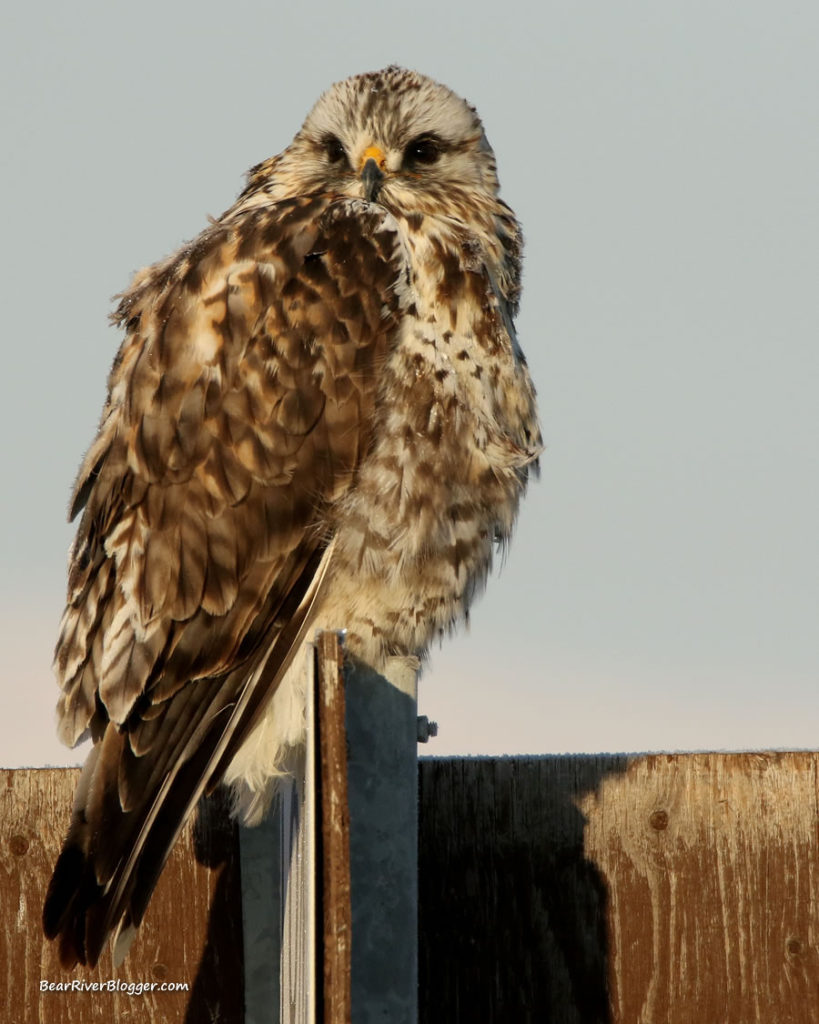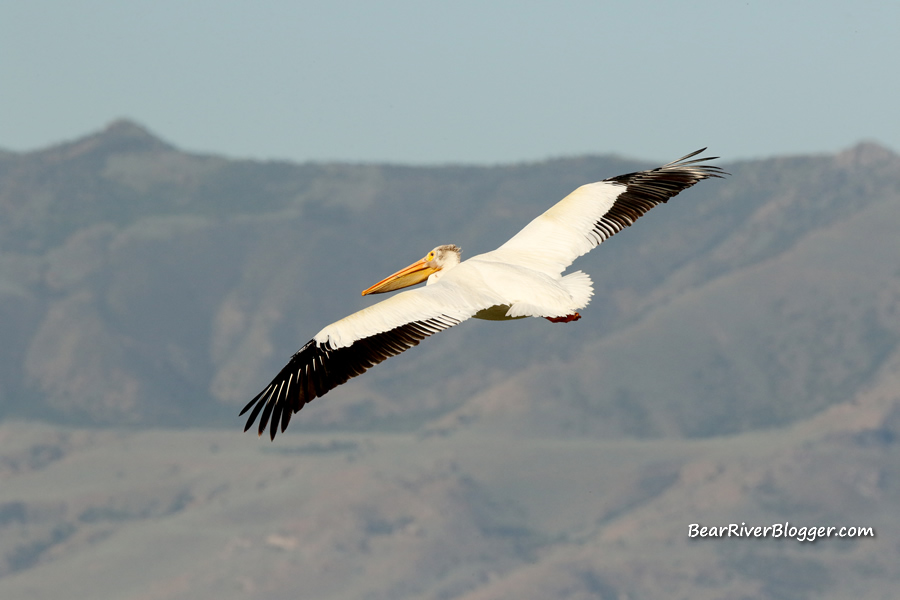As I sit here on the Bear River Migratory Bird Refuge, casually watching a rough-legged hawk perched on a no-parking sign seemingly scanning the marsh for prey, I began to wonder what all do they eat? Do rough-legged hawks eat birds?
You may already know these medium-sized hawks’ diet mainly consists of rodents but that is not all they will consume as I just found out by watching this particular rough-legged hawk in action.
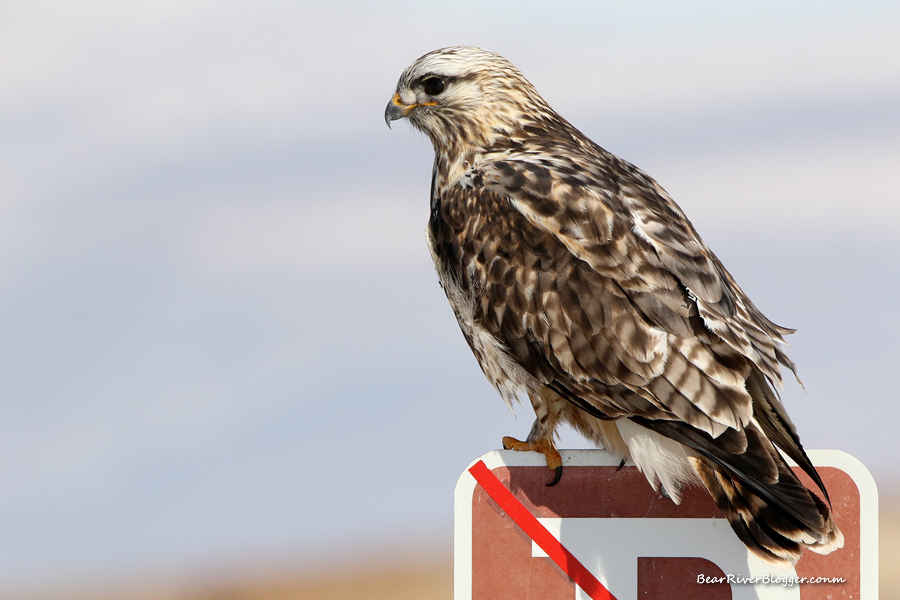
The hawk sat on the sign for a few minutes, scanning the nearby grass as if I was of no bother. It was intensely focused on a particular piece of vegetation behind me.
After a few minutes of watching the uneven terrain, the hawk quickly flew off and landed behind my truck where it was watching so closely.
At first, I couldn’t see if it had captured a rodent or not. Rough-legged hawks prey on a lot of rodents while wintering on the Bear River Migratory Bird Refuge and it is believed to be a major food source while they winter here.
But, as I quickly found out, rodents are not the only source of food for wintering rough-legged hawks on the refuge.
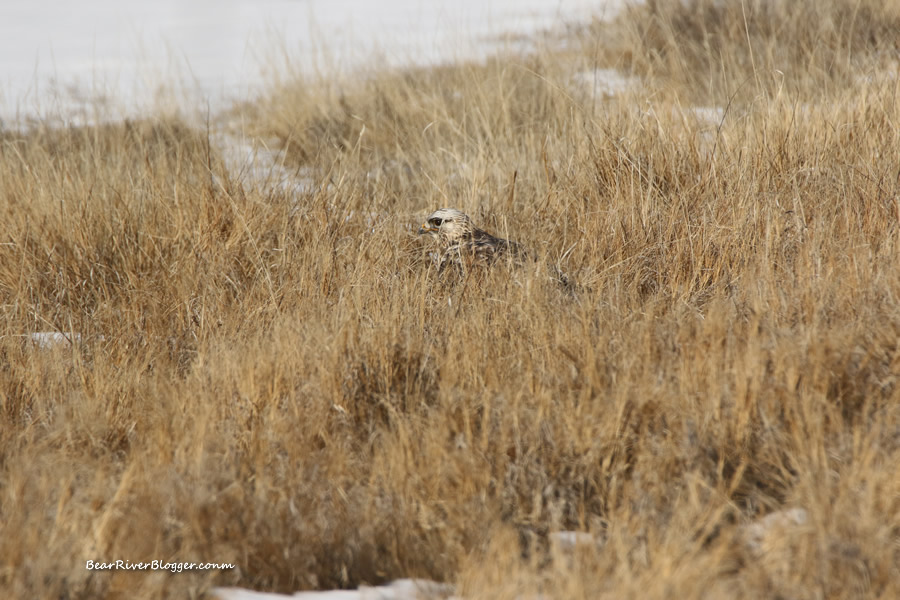
The hawk kept its ground search up for about 5 minutes or so, never leaving the area it had originally landed.
Something had the hawk’s interest and it appeared it wasn’t going to leave without catching whatever it was.
I was certain it was a vole or mouse. I had no idea, however, what it would eventually pull out of the thick patch of grass was something it would hunt for.

Do rough legged hawks eat birds?
Eventually, after a long search, the hawk pulled a marsh wren out of the grass.
I have read on several websites rough-legged hawks will take birds on occasion but I have never heard of one taking a marsh wren before.
I have to admit, I was both intrigued and saddened by this new discovery. I am as fond of marsh wrens as I am of rough-legged hawks.
Watching nature in action like this can be hard to witness at times but we must always remember this is nature and although we can and do have favorite players in nature we must always root for nature itself.
All creatures in nature have a place and a purpose and it is the survival of our natural world which is of most importance so we can have these incredible experiences for years to come and for future generations to enjoy and learn about.
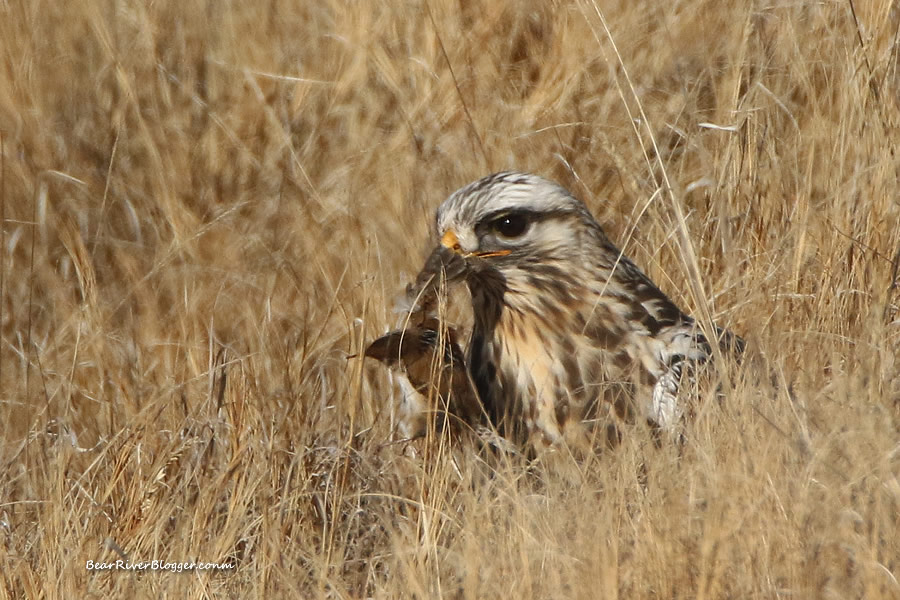
Rough-legged Hawk Feeding Behavior
If you have ever seen a rough-legged hawk you have most likely seen one hovering in place, high above the ground, searching for rodents.
They scan the ground below in search of any movement where they will immediately drop down on their prey.
You can also see them hunt from an elevated perch, such as a fence post, tree, or power pole, as an example, where they can scan the nearby terrain for even the slightest movement.
This is the behavior I was privileged to witness on this particular day.
Rough-legged Hawk Diet
Rodents do indeed make up a large portion of their diet.
Lemmings and voles are the main food source on the arctic tundra where these hawks nest each year.
The Audubon Society website makes note that in high population cycles lemmings can make up 80% of the rough-legged hawk’s diet during the summer.
Other medium-sized rodents such as ground squirrels, young hares, and pocket gophers can also be used as a source of food when necessary.
The Cornell Lab of Ornithology website mentions birds such as ptarmigan and Lapland longspurs are used as well for food.
Wintering ground diets consist mainly of mice, voles, and other rodents but, as I have witnessed yesterday on the Bear River Migratory Bird Refuge, small birds such as marsh wrens can be hunted for food when needed
Where Can I See A Rough-Legged Hawk?
If you are fortunate enough to visit the far northern reaches of the North American continent during summer you could possibly observe the rough-legged hawk on its breeding grounds in the arctic tundra.
The rough-legged hawk typically breeds on the arctic tundra where there are available cliffs for nest sites.
Winter, however, is probably a much easier time to try and observe the rough-legged hawk.
You can find them this time of year across much of the central portion of the United States, wintering on open areas such as farm fields, grasslands, coastal prairies, and marshes.
From this list, you can see they spend their winters in open country, similar to the arctic tundra, where rodents and other prey are available.
I find them almost daily on the Bear River Migratory Bird Refuge, in Northern Utah, during the coldest part of winter.
This vast and nearly 77,000 acre federally managed marsh offers a tundra-like atmosphere for wintering rough-legged hawks.
January is one of the best months to find and observe rough-legged hawks on the refuge. I have seen them as early as November but not consistently, however.
It appears, judging from my own personal observation, rough-legged hawks start appearing on the Bear River Bird Refuge when the coldest part of winter arrives.
For us here in northern Utah, that would be the latter part of December and the month of January.
This time of year, you can find them perched on road signs on the drive down to the auto tour route as well as on the self-guided tour as I did on this particular day.
Rough-legged hawks are only on the Bear River Migratory Bird Refuge for a few very short months, mostly during the coldest part of the winter season so the window of opportunity to view them is smaller than other migratory birds but you can often times get quite up-close and personal experiences with these beautiful hawks as I did with this particular bird.
Contact The Refuge For More Information About Rough-legged Hawks
For more information about wintering rough-legged hawks or any other species of bird which uses the Bear River Migratory Bird Refuge contact the refuge directly. They have a website with more information about the refuge and all their available contact information, including social media channels, address, and phone number.
Subscribe
If you’re a bird watcher like I am, I offer you to head on over to my subscribe page and sign up for email notifications for future blog posts.
I’m grateful for your readership and support for our website and thank you for helping it grow by sharing posts on your favorite social media outlet.
We also have a small YouTube channel where we try and do short video updates in addition to our blog posts so we offer you to follow us there as well if videos are of interest to you.

